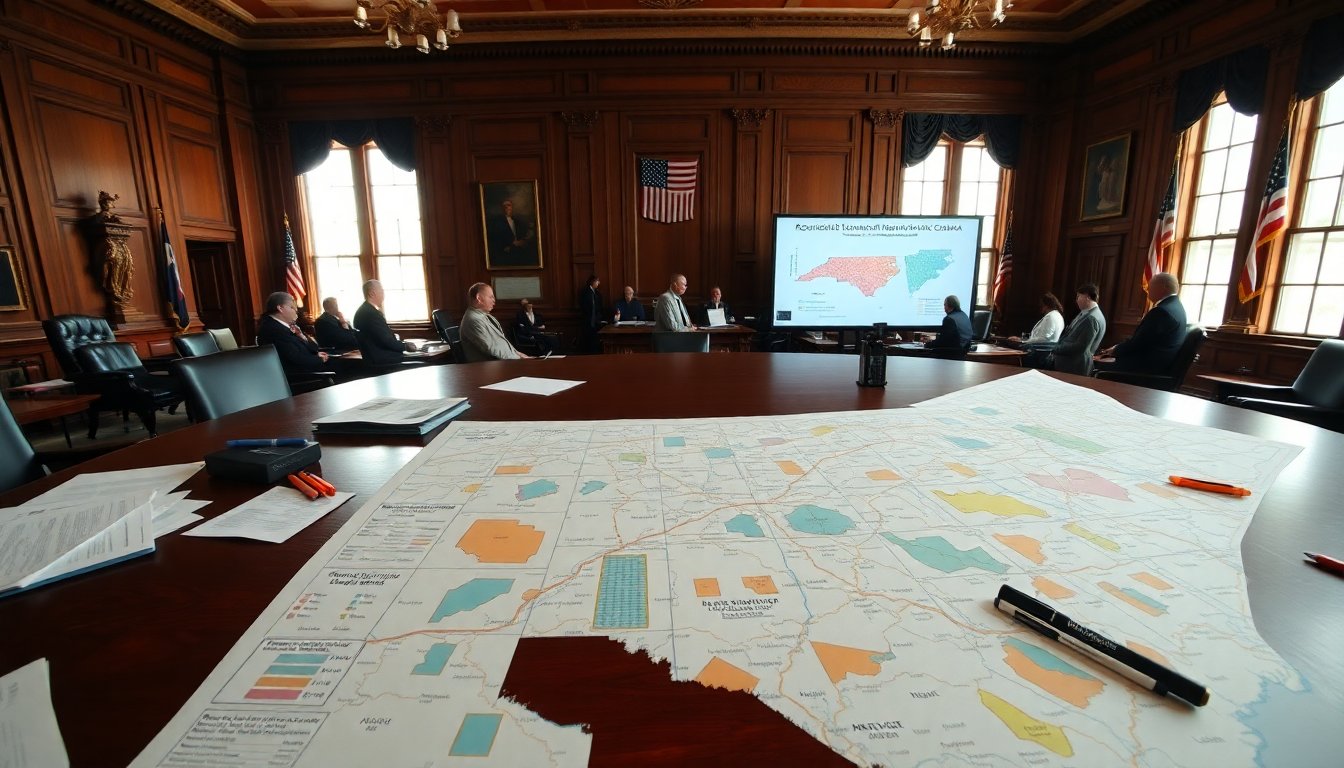Table of Contents
The political landscape in North Carolina is shifting as Republican leaders finalize new congressional maps. These maps aim to enhance the party’s influence ahead of the midterm elections. The elections are set for 2026 and will focus on challenging Democratic Congressman Don Davis, the sole representative from a swing district in the state.
This initiative underscores the ongoing battle for control in Congress, with both parties strategizing to secure their positions.
Republican strategy for the midterms
On a recent Wednesday, the North Carolina House of Representatives approved a new congressional map. This decision followed a similar endorsement from the state Senate.
The Republican leadership in the state has indicated that these changes align with former President Donald Trump’s calls for Republican-led states to redraw district lines. The goal is to secure additional congressional seats. This strategic move is intended to strengthen the party’s influence in Congress and promote their legislative agenda.
Impact on Don Davis and minority representation
The redistricting plan has sparked significant controversy, particularly concerning its impact on Don Davis, an African-American congressman representing more than twenty counties in northeastern North Carolina. This region has historically served as a swing seat, making it a focal point for Republican lawmakers aiming to strengthen their influence.
Critics, including some Democratic representatives, assert that the proposed maps may weaken Black voter representation, which they believe could jeopardize the integrity of the democratic process.
During a rally before the committee vote, tensions escalated as demonstrators condemned the proposed maps, claiming they were racially motivated.
U.S. Representative Alma Adams expressed her concerns, stating, “We know they’re lying when they say, ‘Well, it’s not racial.’ It is racial. They’re going to try to eliminate the only Black male we have in Congress.” This statement underscores the potential impact of the new boundaries on minority representation in North Carolina.
Legal challenges and political fallout
As the Republican-led General Assembly advances with the new congressional map, the prospect of legal challenges becomes increasingly likely. Democratic leaders and voting rights advocates are ready to contest the redistricting in court, arguing that the changes undermine the principles of fair representation. The state’s Democratic Governor, Josh Stein, has publicly criticized the redistricting efforts. However, he lacks the authority to veto the proposed maps due to state laws.
National implications and party dynamics
This redistricting initiative extends beyond local concerns; it reflects a broader national trend where Republican-controlled states are strategically redrawing district lines to enhance their electoral advantage. The endorsement from former President Trump highlights the connection between local and national politics, as he seeks to galvanize support for his agenda nationwide.
In North Carolina, the congressional delegation is made up of ten Republicans and four Democrats. With the midterm elections approaching in 2026, both parties face significant challenges. Historically, the party controlling the White House tends to lose seats during midterms. For the Democrats, securing just three additional seats could shift control of the House, making their strategy vital in the upcoming election.
In reaction to proposed changes, Congressman Don Davis expressed disbelief that his constituents had requested a new congressional map. He noted that since taking office, he has received numerous messages from constituents of various political affiliations, none of which called for redistricting. This reflects a growing frustration among voters about the manipulation of district lines for political advantage.
The road ahead
North Carolina’s congressional representation at a crossroads
Following recent legislative actions, North Carolina’s congressional representation faces uncertainty. The upcoming elections will serve as a crucial test of the Republican strategy and its effects on voter turnout and representation. Activists and political leaders are mobilizing efforts to ensure that all constituents’ voices are heard, especially those potentially impacted by the new congressional maps.
As the candidate filing period approaches on December 1, momentum builds to garner support and challenge the implications of redistricting. North Carolina’s political landscape is shifting rapidly, with the effects of these changes expected to resonate for years.





